Abstract
Since fat accumulation takes place in many algae as a response to exhaustion of the nitrogen supply, it has been suggested that this may provide a means of enhancing the potential food value of algae. To test this possibility, chemostatic continuous cultures of Chlorella sorokiniana and Oocystis polymorpha were subjected to successive reductions in influent nitrogen. As cellular nitrogen content decreased from about 10 to 4%, oxygen evolution, carbon dioxide uptake, chlorophyll content, and tissue production were drastically reduced, but total lipid content was essentially unchanged. Caloric values and C, H, and N analyses suggested a moderate increase in carbohydrate content, but gas chromatographic analyses revealed no significant qualitative or quantitative changes in the fatty acid fraction. In batch-cultured cells, nitrogen could be reduced to 3% of dry weight, causing a concomitant increase in total fatty acids and pronounced changes in the composition of the fatty acid fraction. These results suggest that cellular nitrogen must fall to approximately 3% of dry weight before appreciable increases in lipid synthesis can occur. Cell nitrogen is then apparently completely bound in essential cell constituents, and carbon subsequently fixed is converted into lipid products. The findings indicate that nitrogen limitation may be useful in increasing the food quality of batch-cultured cells, but the technique has little value for continuous culture systems per se.
Full text
PDF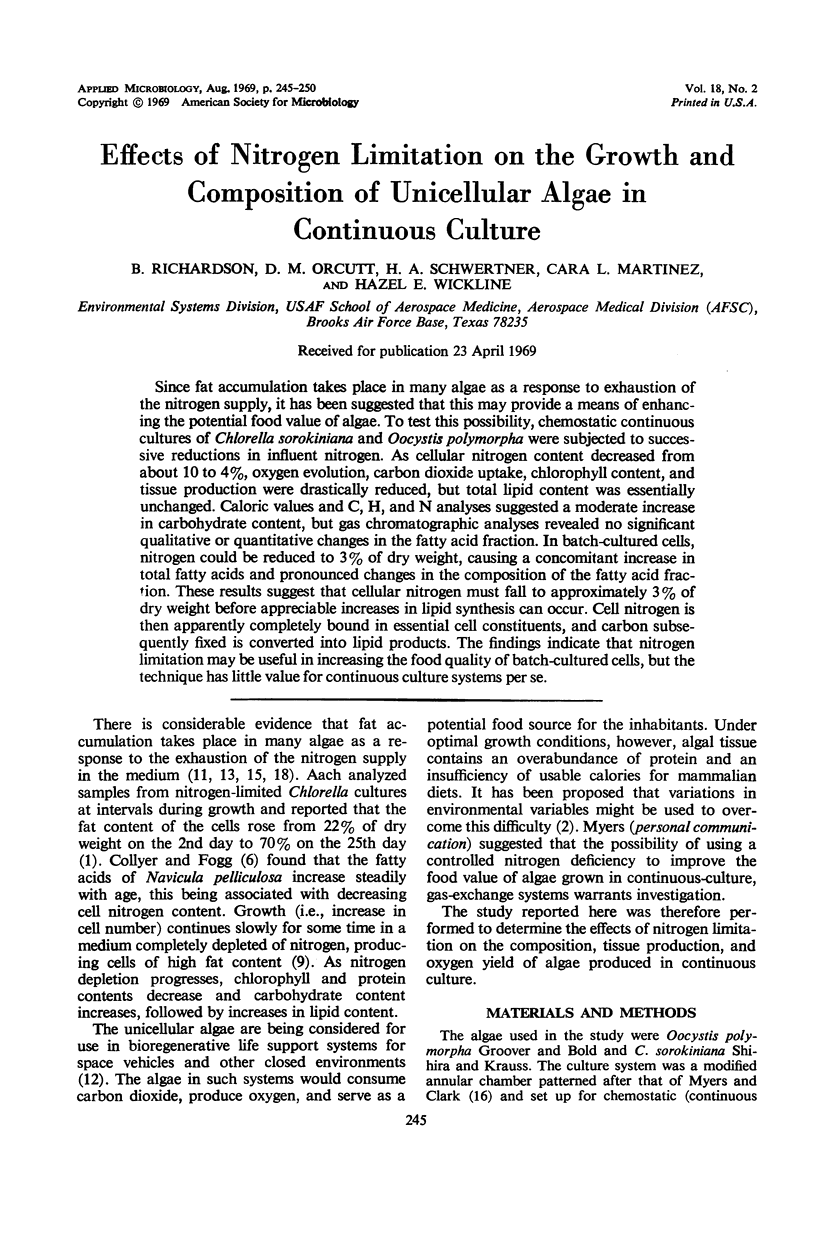
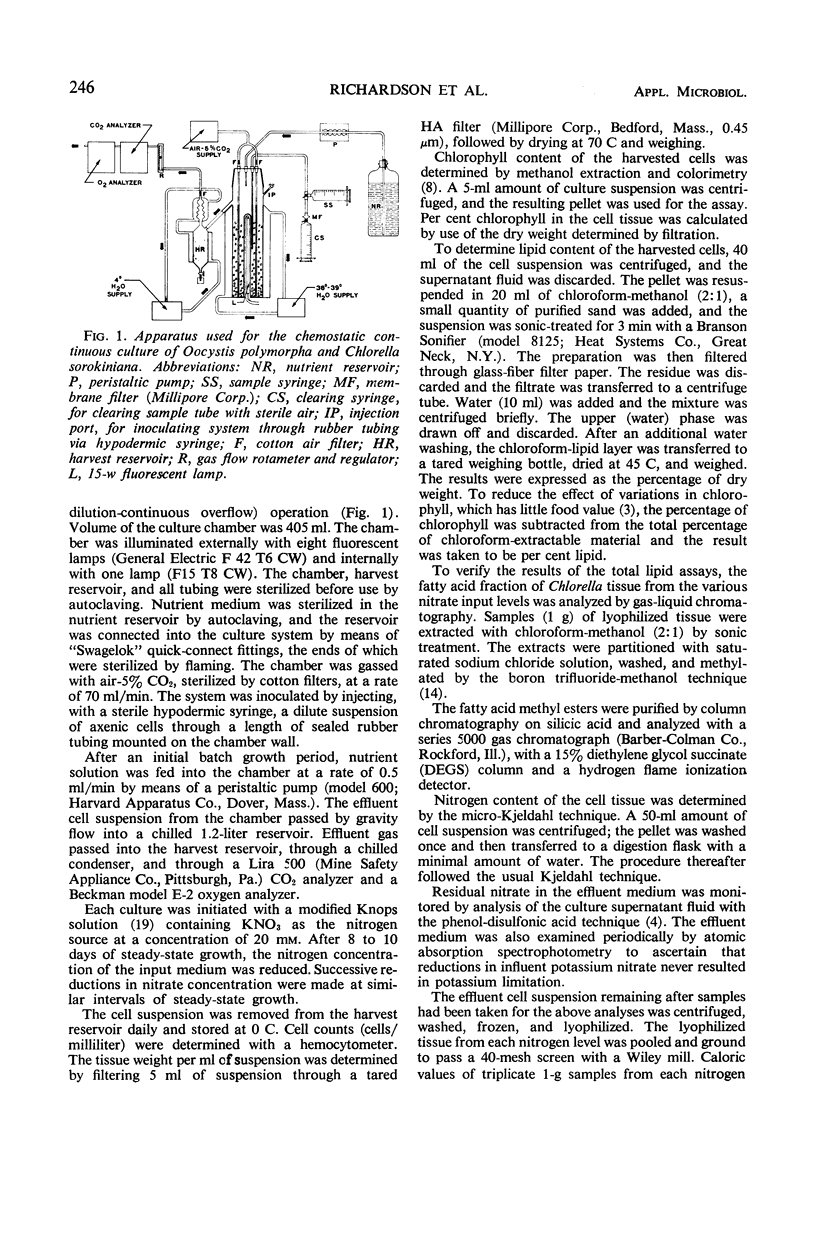
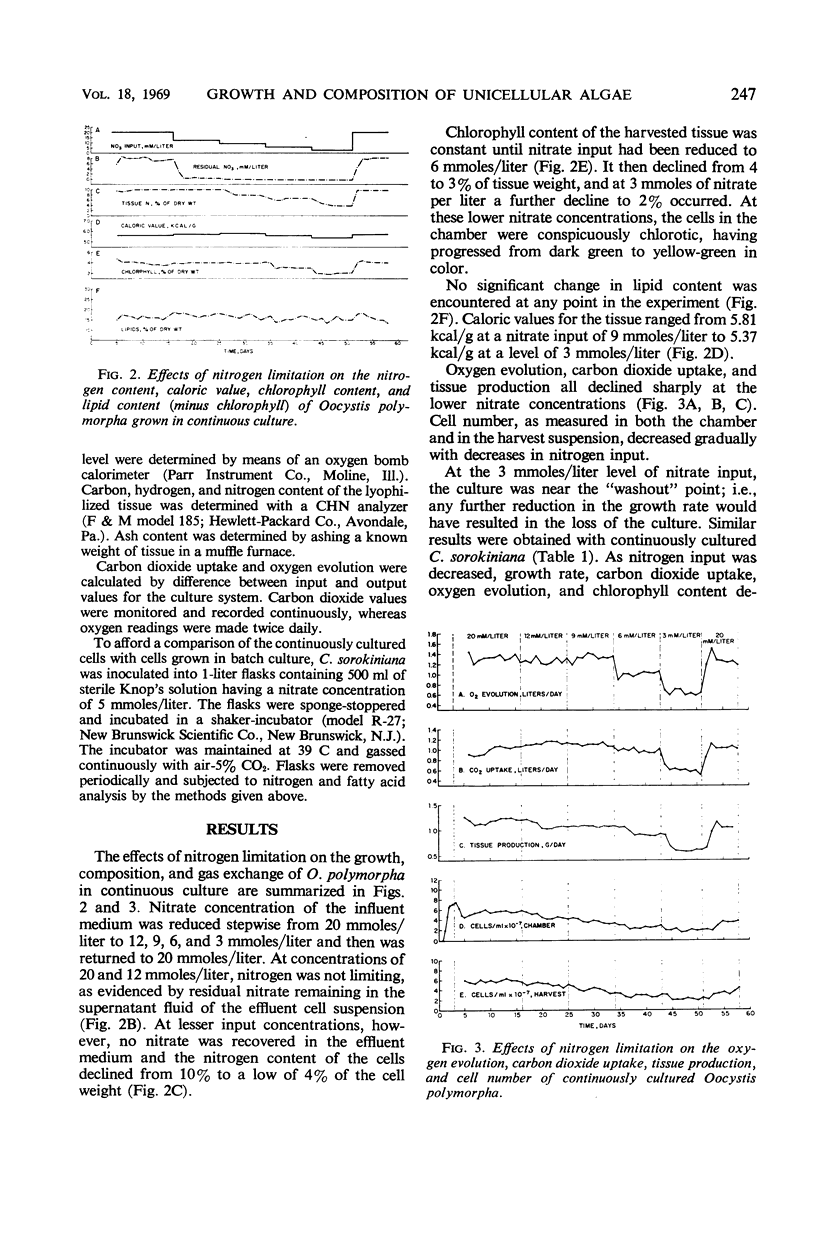
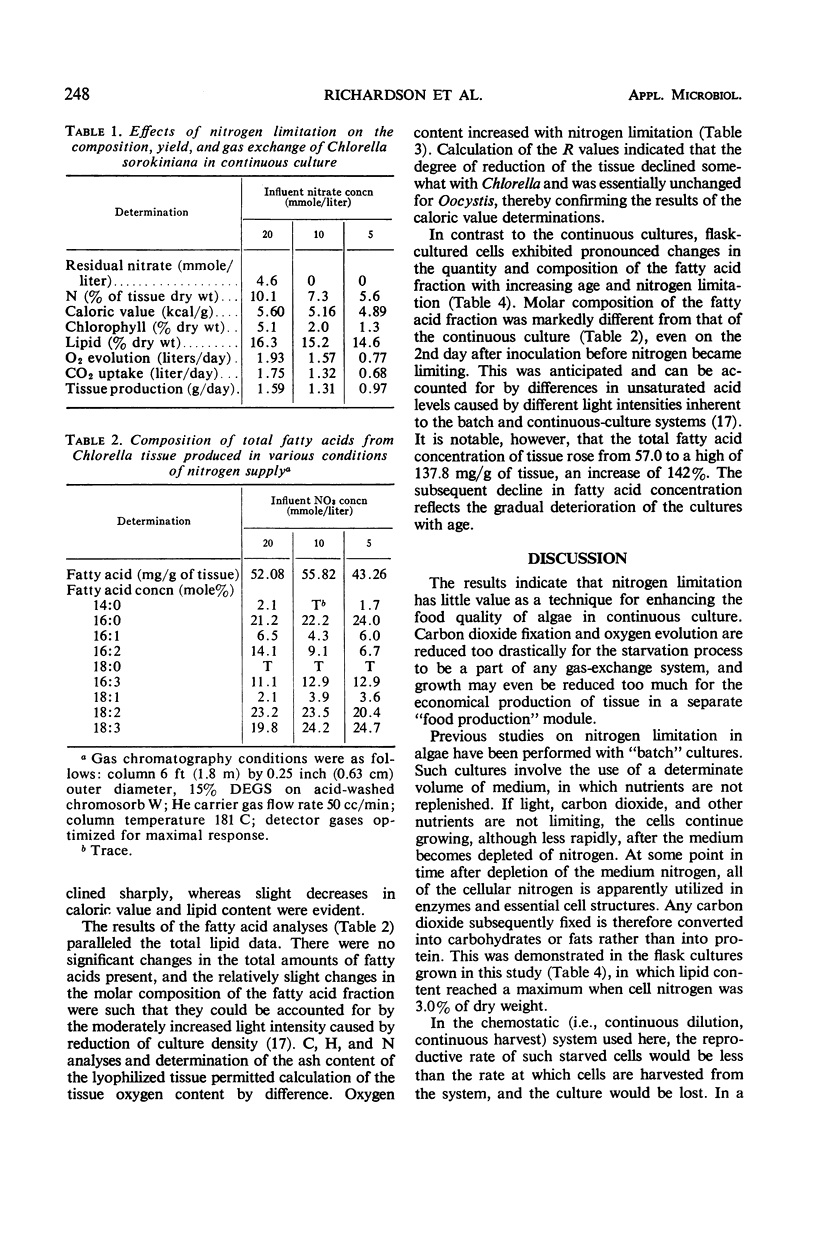
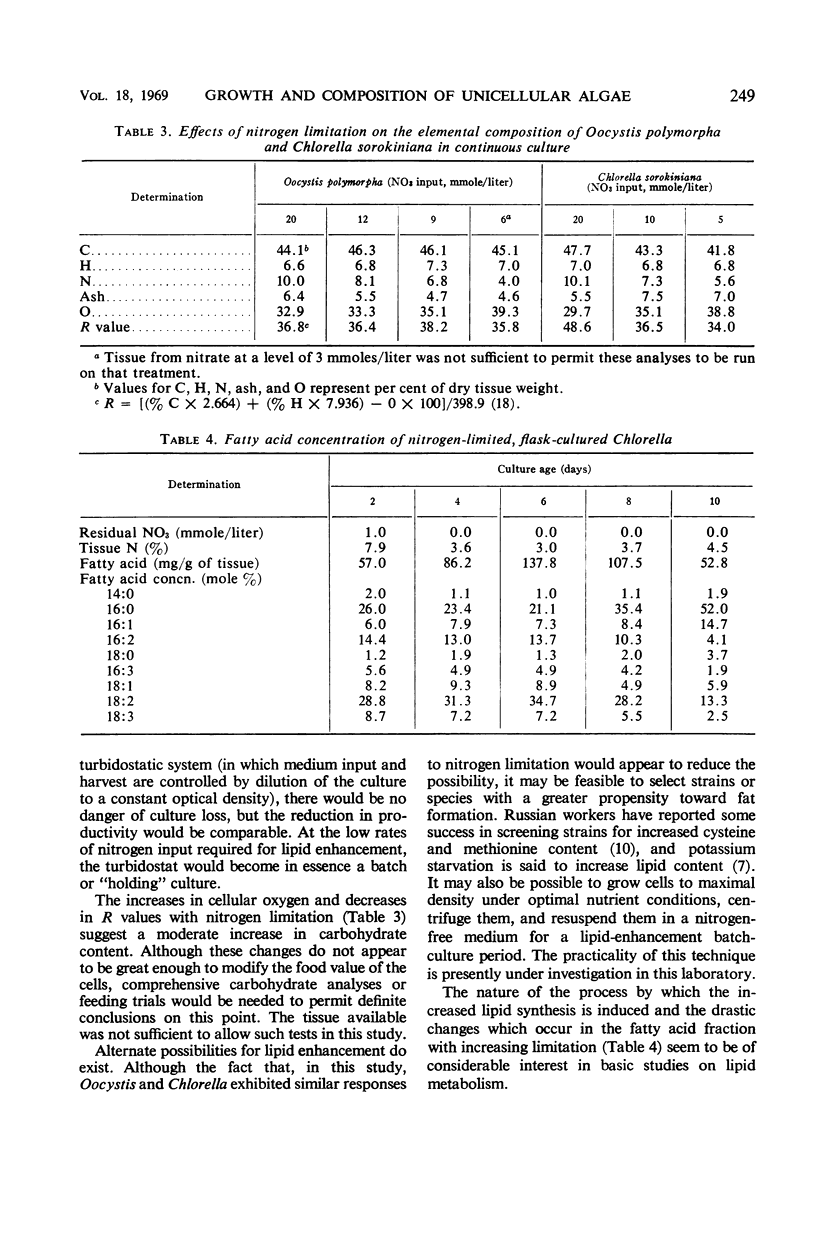
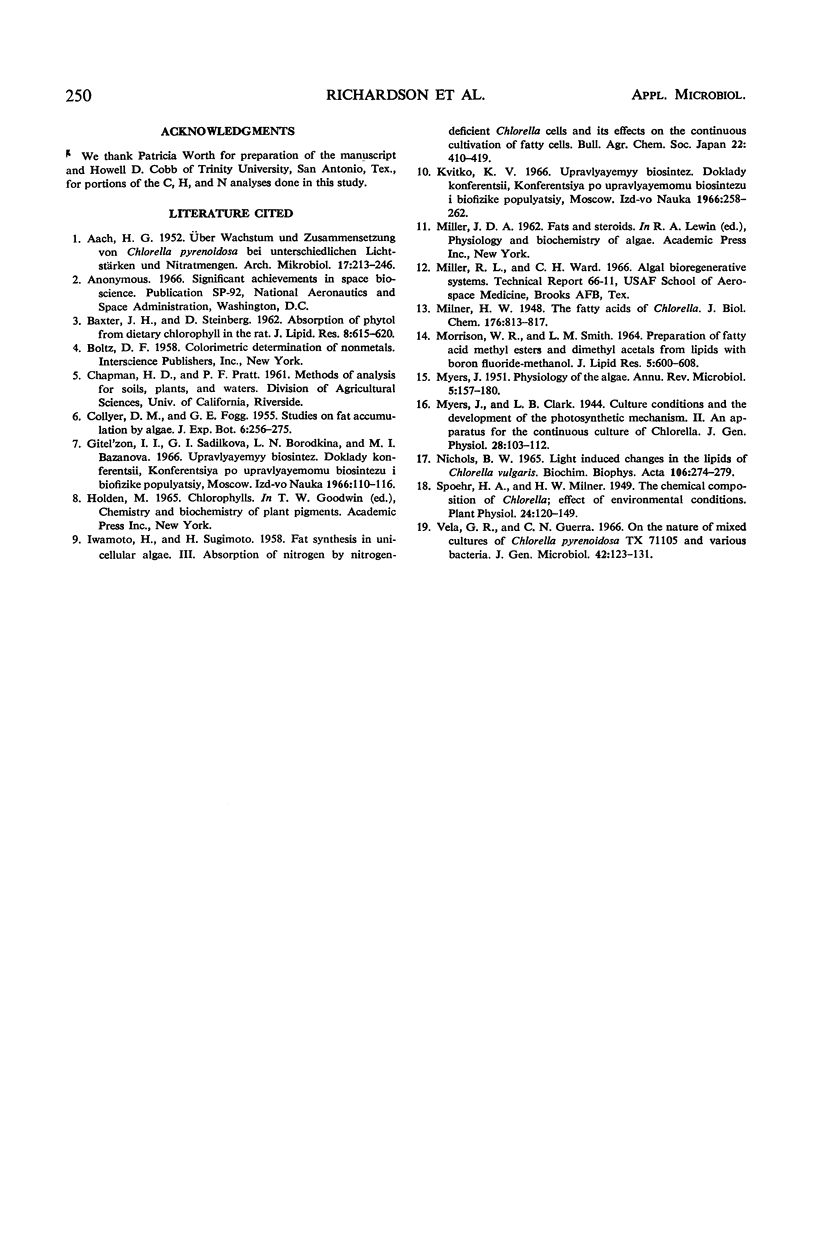
Images in this article
Selected References
These references are in PubMed. This may not be the complete list of references from this article.
- Baxter J. H., Steinberg D. Absorption of phytol from dietary chlorophyll in the rat. J Lipid Res. 1967 Nov;8(6):615–620. [PubMed] [Google Scholar]
- MORRISON W. R., SMITH L. M. PREPARATION OF FATTY ACID METHYL ESTERS AND DIMETHYLACETALS FROM LIPIDS WITH BORON FLUORIDE--METHANOL. J Lipid Res. 1964 Oct;5:600–608. [PubMed] [Google Scholar]
- MYERS J. Physiology of the algae. Annu Rev Microbiol. 1951;5:157–180. doi: 10.1146/annurev.mi.05.100151.001105. [DOI] [PubMed] [Google Scholar]
- Nichols B. W. Light induced changes in the lipids of Chlorella vulgaris. Biochim Biophys Acta. 1965 Oct 4;106(2):274–279. doi: 10.1016/0005-2760(65)90035-4. [DOI] [PubMed] [Google Scholar]
- Spoehr H. A., Milner H. W. THE CHEMICAL COMPOSITION OF CHLORELLA; EFFECT OF ENVIRONMENTAL CONDITIONS. Plant Physiol. 1949 Jan;24(1):120–149. doi: 10.1104/pp.24.1.120. [DOI] [PMC free article] [PubMed] [Google Scholar]
- Vela G. R., Guerra C. N. On the nature of mixed cultures of Chlorella pyrenoidosa TX 71105 and various bacteria. J Gen Microbiol. 1966 Jan;42(1):123–131. doi: 10.1099/00221287-42-1-123. [DOI] [PubMed] [Google Scholar]



